Moss balls, also known as kokedama, are a fun and creative way to add a natural element to your home decor These miniature gardens wrapped in moss are an ancient Japanese art form that have recently surged in popularity
It’s simple, cheap, and very satisfying to make your own moss ball. Easy-to-find items can help you make a living work of art for your home.
This guide has everything you need to know to make your own moss balls. You’ll learn how to:
- Select the right plant
- Make the soil base
- Add your plant
- Wrap with moss
- Secure the moss
- Insert a support stick
- Display your finished moss ball
Let’s get started!
What is a Moss Ball?
A moss ball consists of a plant’s roots encased in a ball of soil or growing medium, all wrapped up in a covering of live moss. The moss thrives in the humid microclimate next to the soil and helps retain moisture.
Mosses usually grow in mats or clumps, so it takes some skill to shape them into a ball. This charming art form began in Japan centuries ago. Moss balls are also called kokedama, which comes from the Japanese words for “moss” (koke) and “ball” (dama).
Materials Needed
To make your own moss ball at home, you will need:
- Small indoor plant like an African violet, orchid, or fern
- Sheet moss or Spanish moss
- Sphagnum peat moss
- Bonsai soil or potting mix
- Floral stem wire and wire cutters
- Long wooden pick
- Scissors
- Bowl of water
- Mist spray bottle (optional)
Step 1: Choose a Plant
Select a small houseplant that will thrive in the humid environment inside a moss ball. Good options include:
- Air plants
- African violets
- Mini orchids
- Small ferns
- Peperomia
- Nerve plants
- Creeping fig
- Prayer plants
Avoid succulents and cacti which require excellent drainage. Also steer clear of plants prone to rotting like African violets.
Step 2: Make the Soil Base
Combine equal parts peat moss and bonsai soil or potting mix in a bowl. Slowly add water while mixing with your hands until you achieve a firm yet malleable clay-like consistency.
Form the mixture into a ball approximately the size of a small orange or grapefruit.
Step 3: Add the Plant
Carefully remove the plant from its pot and shake off any old clinging soil from the roots. Make a hole in your soil ball and gently place the plant’s roots inside.
Cover the roots with soil, leaving only the plant’s crown above the ground.
Step 4: Wrap in Moss
Briefly soak sheet moss or Spanish moss in water until pliable. Place the moss on a flat work surface. Put the soil ball in the center.
Lift the edges of the moss up and around the soil ball. Wrap moss over the soil, enclosing it completely so no soil shows through.
Mist with water to help the moss adhere if needed.
Step 5: Secure the Moss
Use floral wire to wrap around the moss-covered soil ball. Start at the top and wind downwards, making at least 2 crisscrossing passes over the surface.
Twist the ends of the wire together once the ball is fully wrapped. Trim off any excess wire.
Step 6: Add Support
Insert a long wooden pick down through the center of the ball for stability. Angle it diagonally if hanging the moss ball.
Step 7: Display Your Moss Ball
Show off your handmade moss ball in a wood bowl, hanging from fishing line, atop a piece of driftwood, or displayed in a clear vase or jar.
Keep moss balls out of direct sunlight to prevent drying out. Mist occasionally to boost humidity.
Caring for Your Moss Ball
Caring for your moss ball is easy with just a few simple maintenance tips:
-
Water by soaking the entire moss ball in room temperature water when it feels lightweight and dry. Let soak for 10 minutes then allow excess water to drain off before returning to its spot.
-
Mist occasionally between waterings.
-
Fertilize weakly once per month.
-
Repack in fresh moss annually as the old moss dies off.
-
Repot in a larger moss ball or pot if the plant outgrows its space.
Tips for Making Perfect Moss Balls
Follow these tricks for crafting gorgeous moss balls every time:
-
Choose compact, slow growing plants that like humidity.
-
Use clay-heavy bonsai soil mixed with peat for moisture retention.
-
Wrap moss extremely thoroughly over the ball, leaving no gaps.
-
Floral wire gives a seamless hold and clean look.
-
Support larger moss balls with a pick or piece of driftwood.
-
Keep new moss balls in a stable spot for 1-2 weeks before watering.
-
Check moss balls daily at first and water at first sign of dryness.
-
Display out of direct sun and away from heat sources.
Get Creative with Moss Balls
Once you master the basics, get creative with designing your own custom moss balls:
-
Make mini moss ball terrariums or bottle gardens.
-
Craft moss bonsai trees for a living work of art.
-
Group moss balls together for a fabulous centerpiece.
-
Hang moss balls at varied heights from fishing line.
-
Nestle moss balls into a tray of river rocks or pebbles.
-
Show off moss balls in glass bowls, jars, or cloches.
-
Give made-to-order moss balls as gifts for other plant lovers.
The possibilities are endless when you make your own moss balls. It’s a calming activity and they add life to any space. With proper care, these living artworks can thrive for many years.
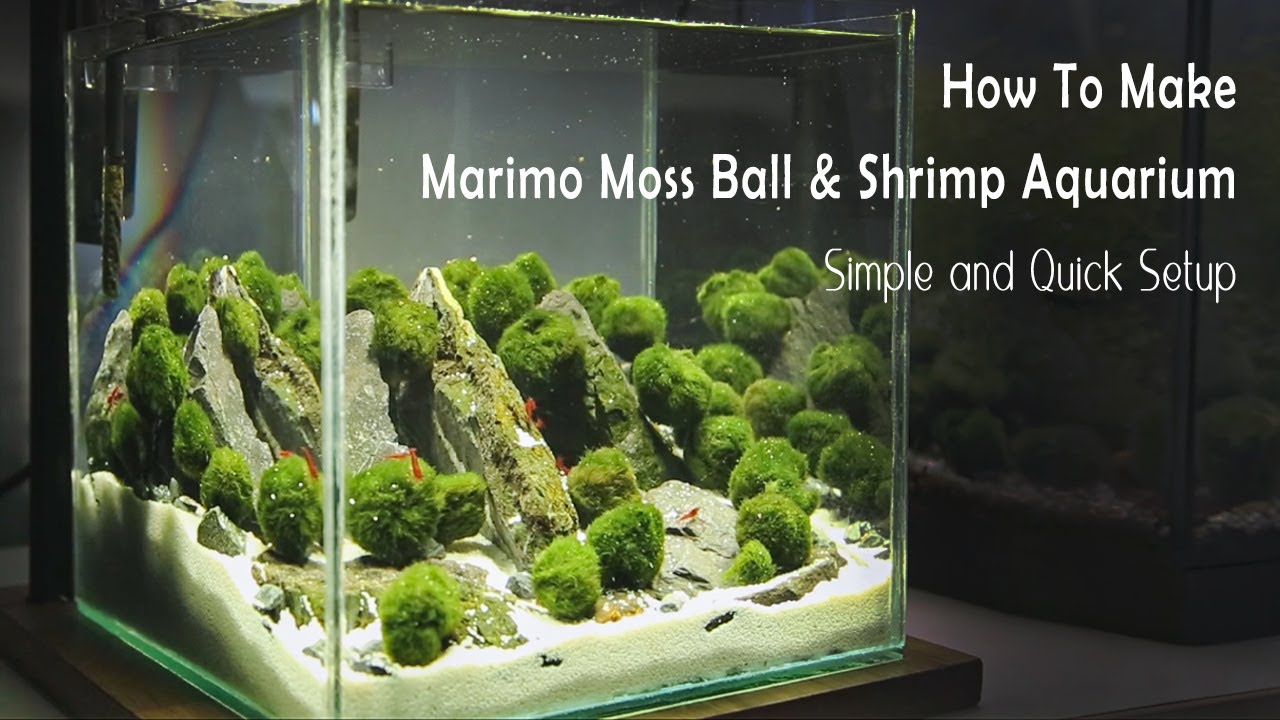
How to make a moss ball?
HOWEVER…I really wasn’t digging the idea of trying to cover a round object (ball) with a square sheet of moss…what I really wanted was a ‘moss spray’ to spray a foam ball. Since that wasn’t happening, I noodled what I think is the next best thing…pureed moss!.
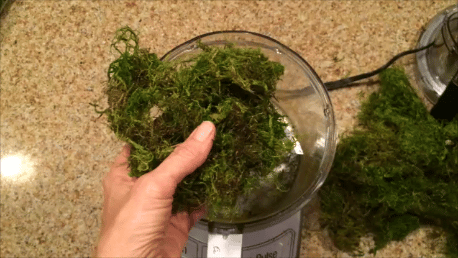
Say What? Yup…I put sheet moss in my food processor and pureed it. Let me say that I love my food processor…not only do I use it for food, but I’ve crushed eggshells for my garden in my processor, and now I’ve pureed moss in my food processor.
For those who are squeamish about pureeing food after I’ve pureed moss…clearly, I ran it through the dishwasher before I put food in it.
Materials to Make Moss Balls
Some of these links take you to affiliate sites where I will get a small commission if you buy something. This does not change the price you pay, though. You can see my full disclosure policy here.
It really didn’t take much moss puree to cover the 6″ ball…just 2 ‘clumps’…I know that’s not really measurable, but just add it in small amounts until you have enough to cover your ball.
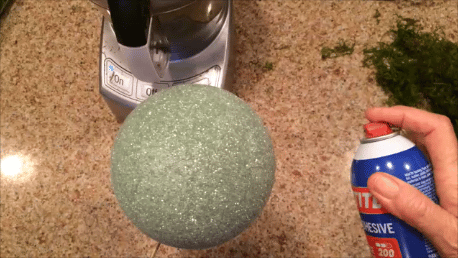
After I pureed the moss, I set it aside and sprayed my foam ball with spray adhesive. I put the ball on a skewer and went OUTSIDE to spray the adhesive…you really don’t want to do that indoors.
Then I dumped the moss in a plastic grocery bag (you want something you can toss in the trash after you are done) and rolled the adhesive-covered ball through the moss.
If you have some bare spots, hit those spots again with your spray adhesive and roll them again.
This video will walk you through the process of making your very own decorative DIY moss balls…with some jaunty music to boot!.
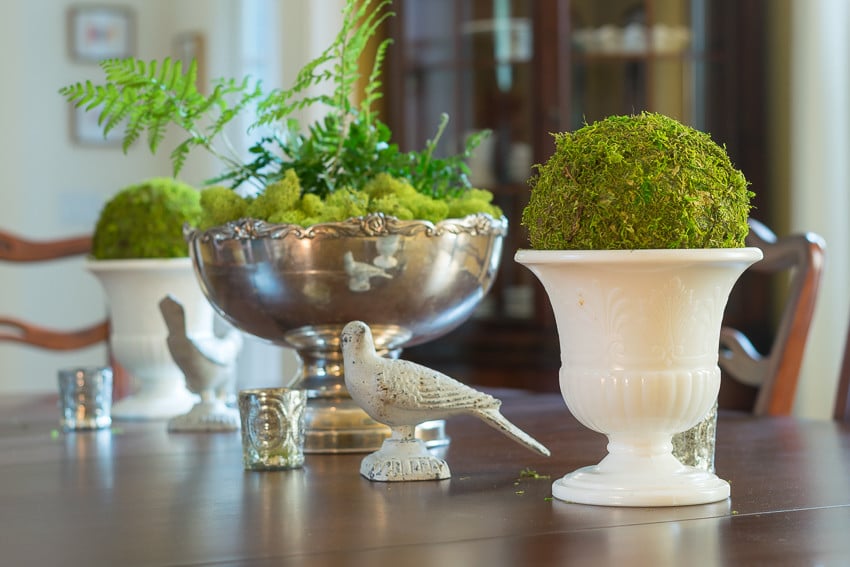
The fern I planted earlier this Spring is doing well, so these little DIY moss balls in their urns complement it well. I’m optimistic that my table’s spring decor will last several months longer.
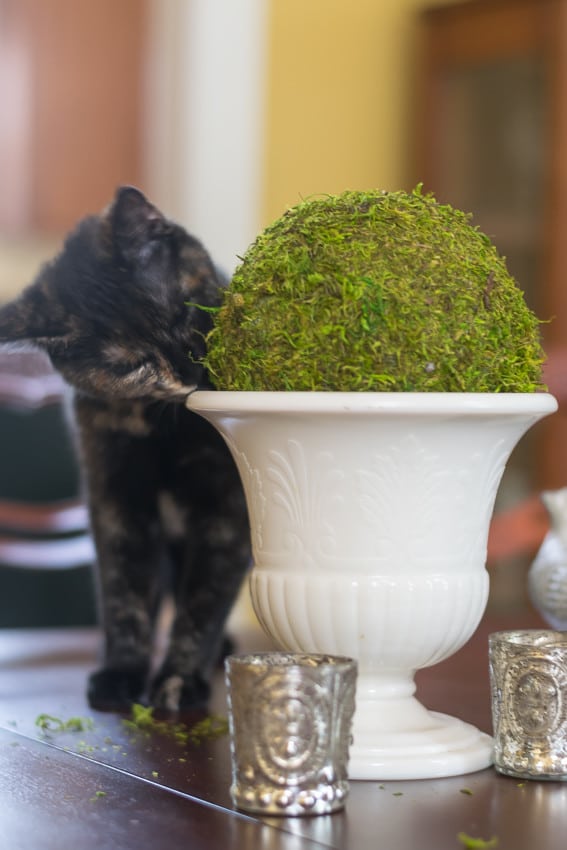
Peep is still learning how to behave at the table (read: “get off the table”), but I don’t think she can hurt these DIY moss balls too badly for now. That doesn’t mean she won’t try.
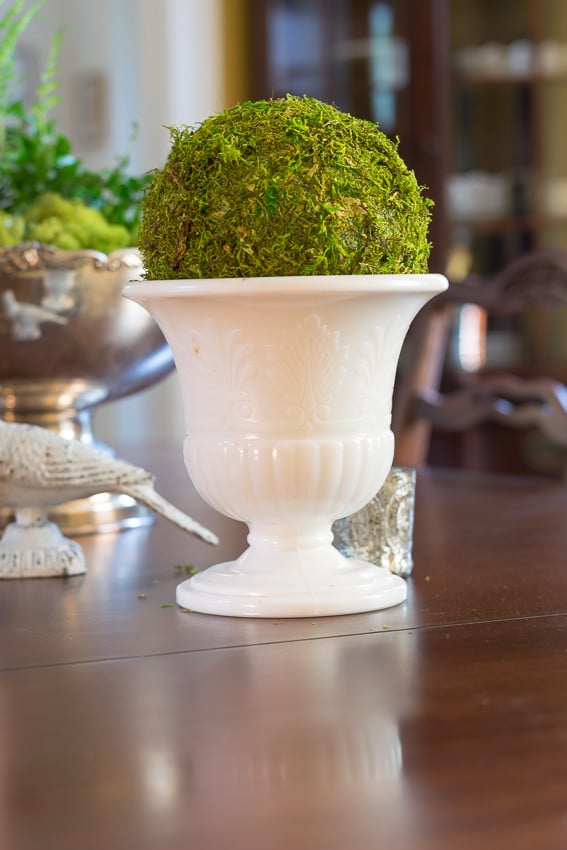
Even though moss balls aren’t new, I was really happy that I could make them so quickly when I couldn’t find what I needed in stores nearby.
Bookmark this page or pin the following to refer back to this post on how to make moss balls in the future.
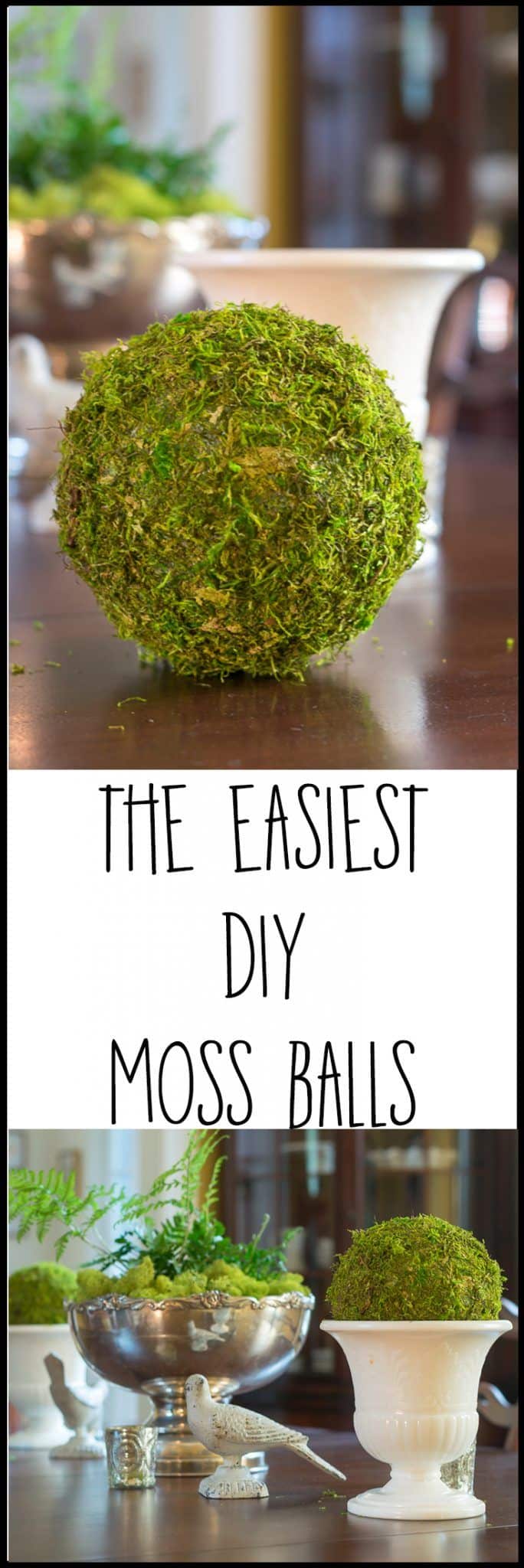
How to Make Kokedama | tutorial and care, live moss ball houseplant
FAQ
How do you make a moss ball at home?
More videos on YouTube Place the sphagnum moss in a bowl of water. Let is soak for a couple of minutes. Squeeze the sphagnum moss together into a ball and wrap the cream coloured wool (yarn) around the sphagnum moss. Some will fall out of your fingers but just keep wrapping until it stops falling out.
Why are Marimo moss balls banned in the US?
Are Marimo moss balls illegal? No, most places don’t have laws against them. Only moss balls that were contaminated with invasive species were made illegal. To ensure compliance, always buy from trusted suppliers that follow environmental regulations.
What do you need for a moss ball?
Moss Ball Pets thrive in any clear container with cool, fresh water—be it a simple glass jar, a decorative vase, or even a fish tank. Placing them on a desk, a windowsill with indirect sunlight, or a cozy corner creates a calming and aesthetic vibe.
How long do moss balls live?
As the algae grows in these lakes, the movement of the waves causes them to gradually form into spheres of soft, green algae with a fuzzy, velvet-like texture. People in Japan believe that marimo balls bring good luck, and since they can live for 200 years or more, many people keep them as family heirlooms.
